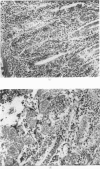Abstract
Infections were produced in patent caeca by administering oocysts of Eimeria tenella per os to fowls in which one caecum was ligated. The caeca were later challenged with sporozoites and it was found that a resistance to infection had been acquired by the previously uninfected ligated caeca. The observations indicate that resistance to caecal coccidiosis develops in areas not previously exposed to parasitism by E. tenella. It is suggested that the immunity acquired by the ligated caeca is mediated through the circulation either by humoral antibodies or by lymphoid cells, or by a combination of both.
Full text
PDF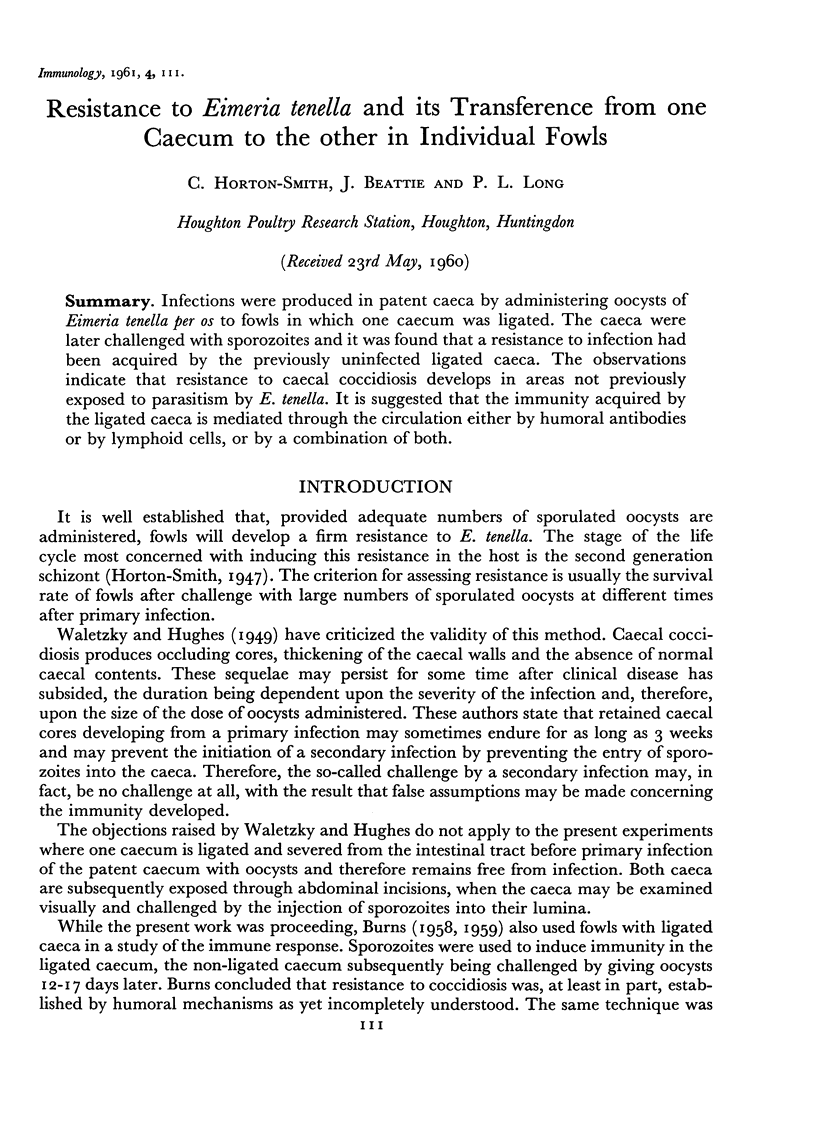


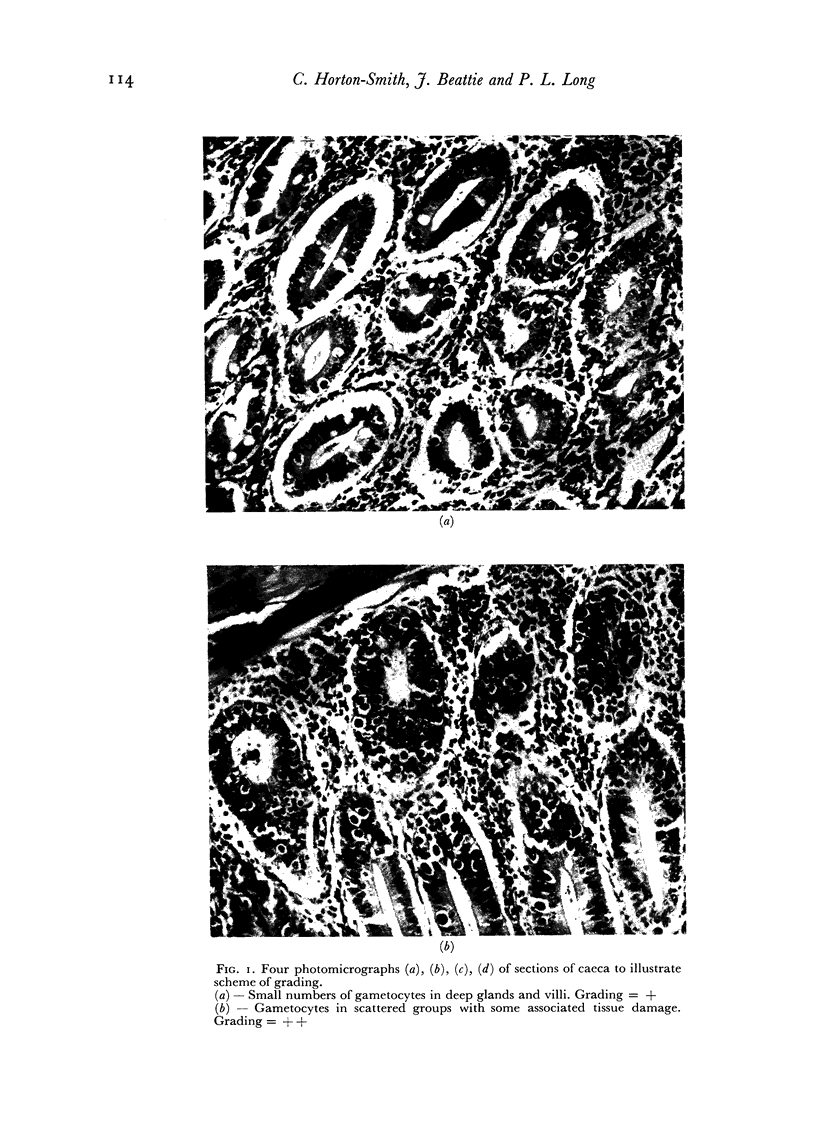
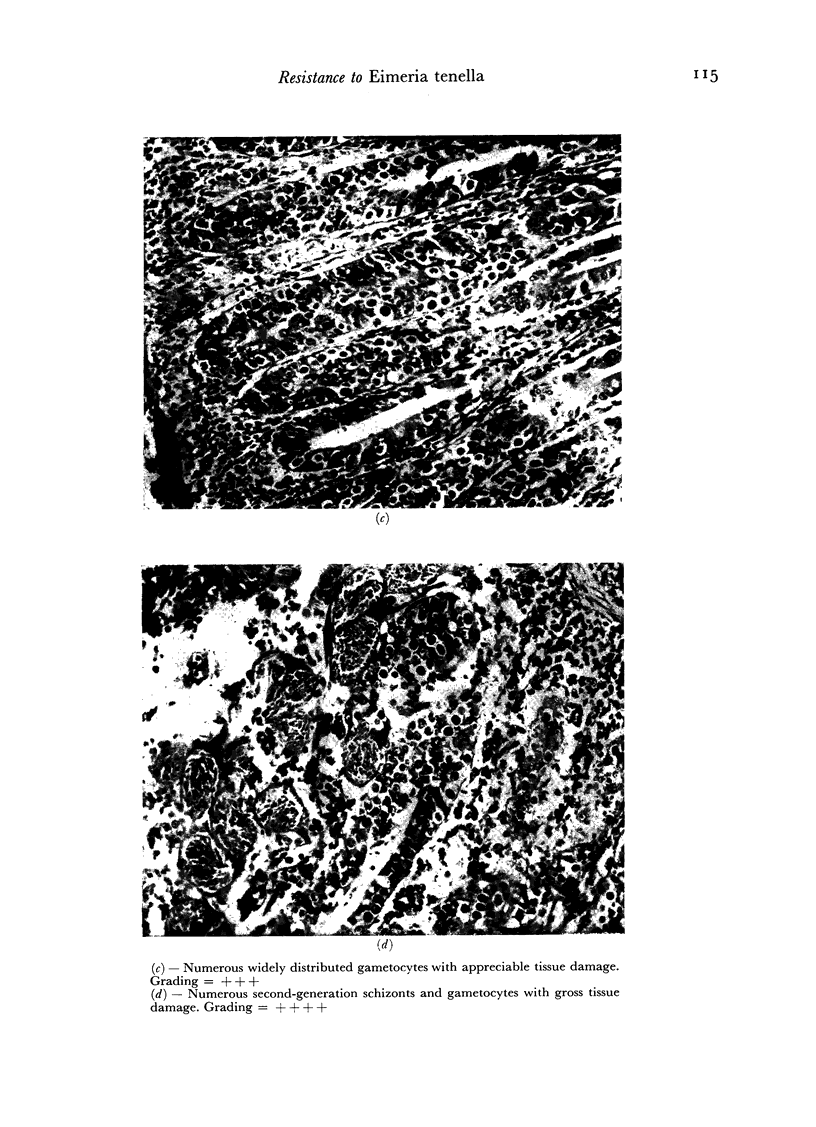
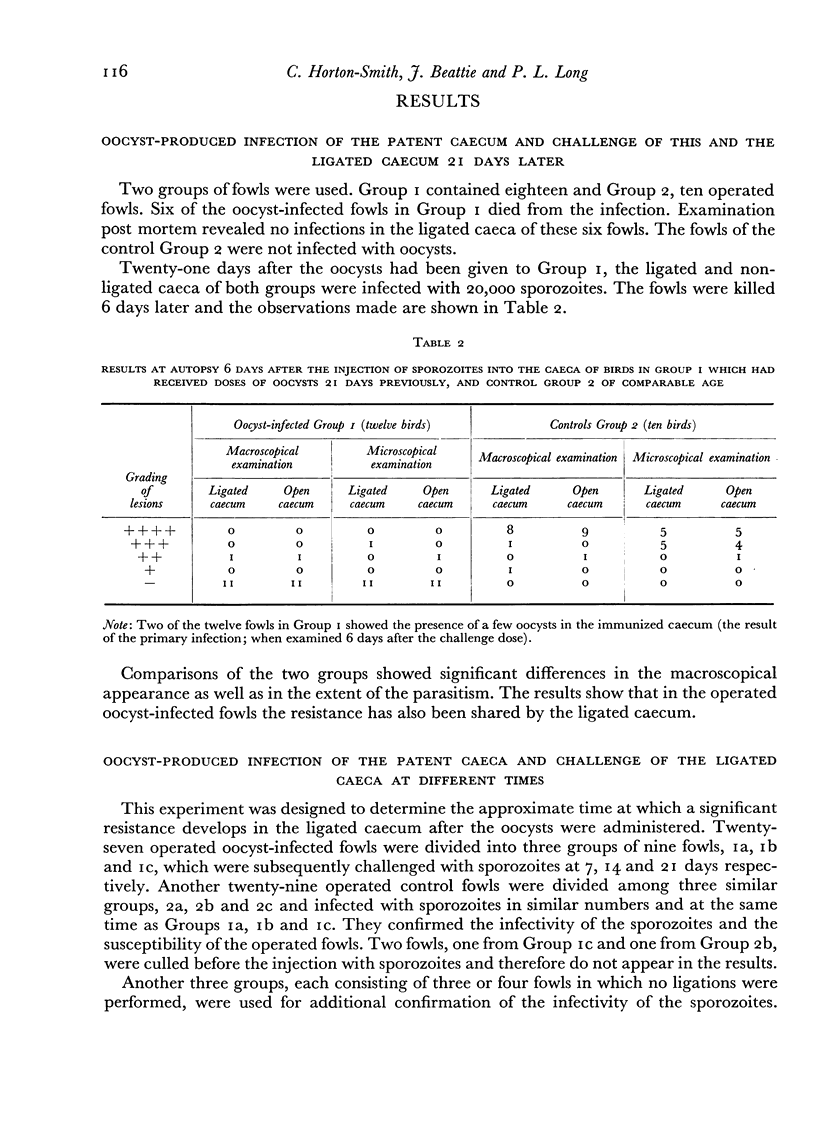



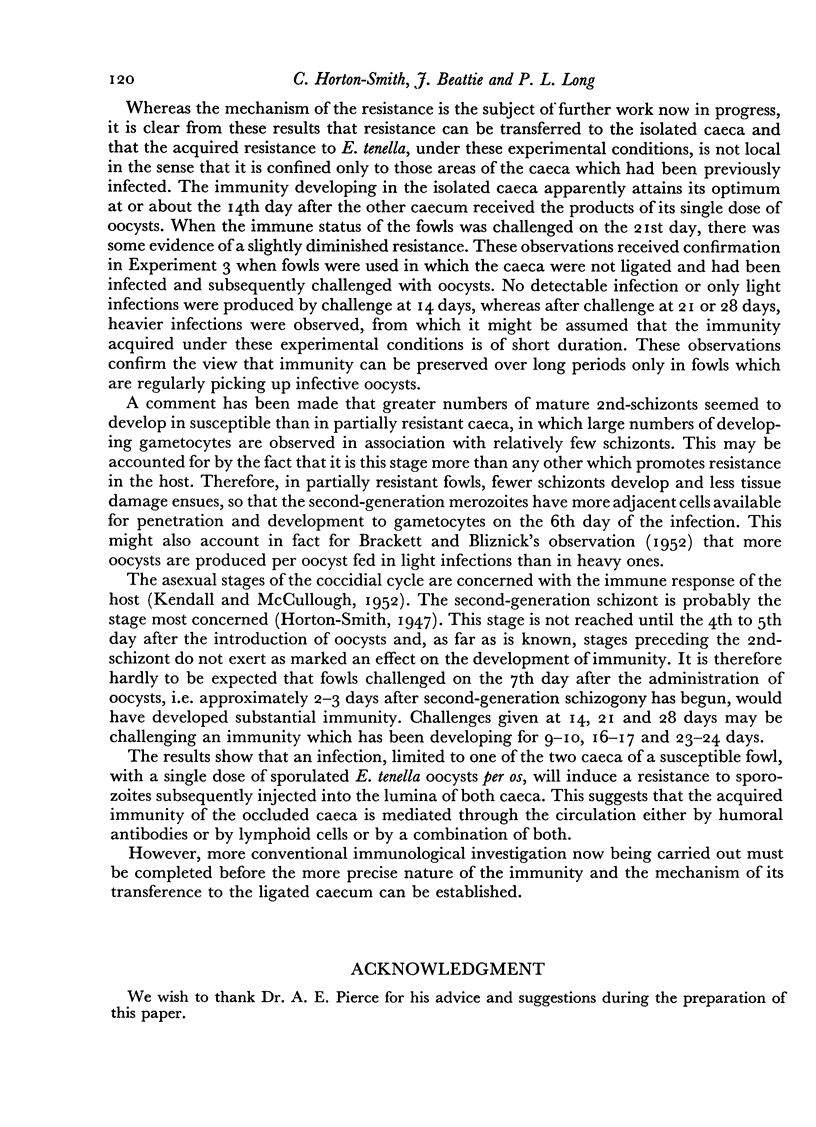

Images in this article
Selected References
These references are in PubMed. This may not be the complete list of references from this article.
- BRACKETT S., BLIZNICK A. The reproductive potential of five species of coccidia of the chicken as demonstrated by oocyst production. J Parasitol. 1952 Apr;38(2):133–139. [PubMed] [Google Scholar]
- BURNS W. C., CHALLEY J. R. Resistance of birds to challenge with Eimeria tenella. Exp Parasitol. 1959 Dec;8:515–526. doi: 10.1016/s0014-4894(59)80001-1. [DOI] [PubMed] [Google Scholar]




